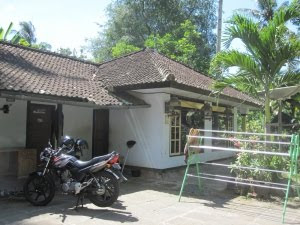On an island paradise where surfers from around the world come to catch the best waves, and honeymooners flock, I knew that volunteering in Bali as a Kiva Fellow I would see distinct contrasts in the lives of the people on this island.
Fred lives in a very small house in Northern Bali made of thatch with a corrugated iron roof. He earns a modest income from his job as a fisherman and is taking out a loan to support this enterprise, which is his sole source of income. Meanwhile, Yarawi living 10 minutes by motorbike from Fred works in housekeeping at a hotel, and is taking out a loan to start a shrimp selling business. His house is made of cement, with white marble floors, and his glass windows are patterned with roses on the sides – his is the largest house on the street. In West Bali, the differences are evident also – particularly within borrower groups where in many cases the leader is chosen because she has a more successful business than the others and can therefore serve as a role model. While Putu has a pig enterprise where she raises and fattens ~20 piglets at a given time, in addition to the salon she operates out of her house, other members in her borrowing group are raising 2-3 piglets.




Housing differences in areas served by MUK
While differences exist, however, these MUK borrowers have a common desire: to take out a small loan to improve their businesses, and increase their incomes. Putu’s group members may not have as large an enterprise as hers, but many of them hope to add another piglet to their business (through profits earned or access to increased capital) – which will allow them to grow their incomes, and invest in a better life for them and their children. The process of growing income for many borrowers is incremental, particularly as the small loans are used in largely low-risk, low-return businesses…but can be life-changing.
On Friday, I met Jo, an MUK (formerly Dinari) borrower for over seven years. His loans had allowed him to grow his bamboo housing supplies business, and his increased profits had gone toward saving for his children’s education and in slowly transforming his house. In the place of an old brick house with concrete floors now stands a concrete house with white marble tiled floors. His children will hopefully go to university, an opportunity he was never afforded. His story affirmed my belief in microfinance – while it may not be able to erase all inequalities, it can lead to real and significant change.
Joanne Gan is currently working as a Kiva Fellow.
Joanne's story was originally posted on "Kiva Stories from the Field" on September 5, 2010. To see the original post, please click here.

